Papers by Shira Faigenbaum-Golovin
Semitica, 2020
This article deals with Ostracon 24 from Arad, Side A. It has three parts, written by different a... more This article deals with Ostracon 24 from Arad, Side A. It has three parts, written by different authors: An introduction to the multispectral imaging of the ostracon, which made this study possible, followed by two alternative decipherments of the inscription.
Newsletter of the Institute of Archaeology, Tel Aviv University, Winter 2017: p. 12.
Offprint from: Rethinking Israel: Studies in the History and Archaeology of Ancient Israel in Honor of of Israel Finkelstein © Copyright 2017 Eisenbrauns. All rights reserved

Rethinking Israel: Studies in the History and Archaeology of Ancient Israel in Honor of Israel Finkelstein, 2017
We deal with the general issue of handling statistical data in archaeology for the purpose of ded... more We deal with the general issue of handling statistical data in archaeology for the purpose of deducing sound, justified conclusions. The employment of various quantitative and statistical methods in archaeological practice has existed from its beginning as a systematic discipline in the 19th century (Drower 1995). Since this early period, the focus of archaeological research has developed and shifted several times. The last phase in this process, especially common in recent decades, is the proliferation of collaboration with various branches of the exact and natural sciences. Many new avenues of inquiry have been inaugurated, and a wealth of information has become available to archaeologists. In our view, the plethora of newly obtained data requires a careful reexamination of existing statistical approaches and a restatement of the desired focus of some archaeological investigations. We are delighted to dedicate this article to Israel Finkelstein, our teacher, adviser, colleague, and friend, who is one of the father figures of this ongoing scientific revolution in archaeology (e.g., Finkelstein and Piasetzky 2010, Finkelstein et al. 2012, 2015), and wish him many more fruitful years of research.
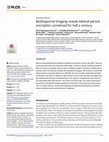
PLOS ONE, 2017
Most surviving biblical period Hebrew inscriptions are ostraca — ink-on-clay texts. They are poor... more Most surviving biblical period Hebrew inscriptions are ostraca — ink-on-clay texts. They are poorly preserved and once unearthed, fade rapidly. Therefore, proper and timely documentation of ostraca is essential. Here we show a striking example of a hitherto invisible text on the back side of an ostracon revealed via multispectral imaging. This ostracon, found at the desert fortress of Arad and dated to ca. 600 BCE (the eve of Judah's destruction by Nebuchadnezzar), has been on display for half a century. Its front side has been thoroughly studied, while its back side was considered blank. Our research revealed three lines of text on the supposedly blank side and four "new" lines on the front side. Our results demonstrate the need for multispectral image acquisition for both sides of all ancient ink ostraca. Moreover , in certain cases we recommend employing multispectral techniques for screening newly unearthed ceramic potsherds prior to disposal.

Alphabets, Texts and Artefacts in the Ancient Near East: Studies Presented to Benjamin Sass, 2016
Our research team enjoyed the privilege of collaborating with Benjamin Sass over a period of seve... more Our research team enjoyed the privilege of collaborating with Benjamin Sass over a period of several years. We are happy to dedicate this article to him and wish to express our gratitude for what has been both a prodigious and enjoyable experience. The purpose of our joint endeavor has been the introduction of modern techniques from computer science and physics to the realm of Iron Age epigraphy. One of the most important issues addressed during our cooperation was the topic of facsimile creation. Facsimile creation is a necessary preliminary step in the process of deciphering and analyzing ancient inscriptions. Several manual facsimile construction techniques are currently in use: drawing upon collation of the artifact; outlining on transparent paper overlaid on a photograph of the inscription; and computer-aided depiction via software such as Adobe Photoshop, Adobe Illustrator, Gimp or Inkscape (see Summary section below for software web links). Despite their importance for the field of epigraphy, little attention has thus far been devoted to the methodology of facsimile creation (though the recent comprehensive treatment by Parker and Rollston 2016). Recent decades have seen rapid development and consolidation of various computerized image processing algorithms. Among the most basic and popular tasks in this field is the creation of a black-and-white version of a given image, denoted as image binarization (see Fig.1a–b). Often, such a binarized image is used as a first step for further image processing missions, such as Optical Character Recognition (OCR), texts digitization and text analysis tasks. An algorithmic creation of binarizations can therefore be seen as another method of facsimile creation. Furthermore, a relatively new sub-domain of image processing, Historical Imaging and Processing (HIP), specializes in handling antique documents of different types, periods and origins. Accordingly, binarization algorithms stemming from HIP are even more suitable for archaeological purposes.
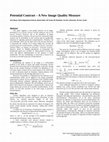
Proceedings of the Image Quality and System Performance XIV Conference, 2017
This paper suggests a new quality measure of an image, pertaining to its contrast. Several contra... more This paper suggests a new quality measure of an image, pertaining to its contrast. Several contrast measures exist in the current research. However, due to the abundance of Image Processing software solutions, the perceived (or measured) image contrast can be misleading, as the contrast may be significantly enhanced by applying grayscale transformations. Therefore, the real challenge, which was not dealt with in the previous literature, is measuring the contrast of an image taking into account all possible grayscale transformations, leading to the best " potential " contrast. Hence, we suggest an alternative " Potential Contrast " measure, based on sampled populations of foreground and background pixels (e.g. scribbles or saliency-based criteria). An exact and efficient implementation of this measure is found analytically. The new methodology is tested and is shown to be invariant to invertible grayscale transformations.
Palestine Exploration Quarterly, 2014
A recent study shows that multispectral (MS) imaging can improve the legibility of ostraca. Sever... more A recent study shows that multispectral (MS) imaging can improve the legibility of ostraca. Several examples of Iron Age ostraca unearthed over twenty years ago in Israel (Ḥorvat ʿUza and Ḥorvat Radum) are presented, showing how new images taken with an MS system improve the reading of inscriptions that have significantly faded over time. The article provides instructions for constructing a simple and low-cost MS imaging system that yields comparable results to commercial systems
Proceedings of the 2013 ACM symposium on Document engineering - DocEng '13, 2013
Document binary images, created by different algorithms, are commonly evaluated based on a pre-ex... more Document binary images, created by different algorithms, are commonly evaluated based on a pre-existing ground truth. Previous research found several pitfalls in this methodology and suggested various approaches addressing the issue. This article proposes an alternative binarization quality evaluation solution for binarized glyphs, circumventing the ground truth. Our method relies on intrinsic properties of binarized glyphs. The features used for quality assessment are stroke width consistency, presence of small connected components (stains), edge noise, and the average edge curvature. Linear and tree-based combinations of these features are also considered. The new methodology is tested and shown to be nearly as sound as human experts' judgments.
Journal of Archaeological Science, 2012
We examine how multispectral imaging can be used to document and improve reading of ancient inscr... more We examine how multispectral imaging can be used to document and improve reading of ancient inscriptions. The research focuses on ostraca, texts written in ink on ceramic potsherds. Three corpora of Hebrew ostraca dating to the Iron Age II were imaged in visible and near infrared light using a state-ofthe-art commercial spectral imager. To assess the quality of images, we used a new quality evaluation measure which takes into account various contrast and brightness transformations. We show that there exists a wavelength range where the readability of ostraca is enhanced. Moreover, we show that it is sufficient to use certain bandpass filters to achieve the most favorable image. Our study paves the way towards a low cost multispectral method of imaging ostraca inscriptions.
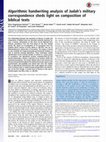
Proceedings of the National Academy of Sciences, 2016
The relationship between the expansion of literacy in Judah and composition of biblical texts has... more The relationship between the expansion of literacy in Judah and composition of biblical texts has attracted scholarly attention for over a century. Information on this issue can be deduced from Hebrew inscriptions from the final phase of the first Temple period. We report our investigation of 16 inscriptions from the Judahite desert fortress of Arad, dated ca. 600 BCE—the eve of Nebuchadnezzar’s destruction of Jerusalem. The inquiry is based on new methods for image processing and document analysis, as well as machine learning algorithms. These techniques enable identification of the minimal number of authors in a given group of inscriptions. Our algorithmic analysis, complemented by the textual information, reveals a minimum of six authors within the examined inscriptions. The results indicate that in this remote fort literacy had spread throughout the military hierarchy, down to the quartermaster and probably even below that rank. This implies that an educational infrastructure that could support the composition of literary texts in Judah already existed before the destruction of the first Temple. A similar level of literacy in this area is attested again only 400 y later, ca. 200 BCE.

Hebrew Bible and Ancient Israel, 2012
In our European Research Council (ERC) funded project entitled Ancient (Biblical) Israel: The Exa... more In our European Research Council (ERC) funded project entitled Ancient (Biblical) Israel: The Exact and Life Sciences Perspective, we use a novel approach to integrate the macro and microscopic archaeological records from the Iron Age. The project is organized into ten tracks that were formulated in order to shed light on five main themes related to ancient (biblical) Israel:
1. The time of Ancient Israel:
a. Radiocarbon: correlating the chronology of Ancient Israel with neighboring lands, especially the Mediterranean basin, as well as enhancing the dating of the different phases in the Iron Age and deepening understanding of relative chronology based on ceramic typology.
2. The genesis of Ancient Israel:
a. Ancient DNA: collected from humans and animals to track origin and movement of ancient populations.
b. Geo-archaeology: understanding formation processes, use of space, and tracking subsistence economy practices in Ancient Israel by examining sediments in sites that represent Iron Age towns and villages.
c. Palynology: studying cores of sediments from the Dead Sea and Sea of Galilee in order to obtain information on paleoclimate, subsistence practices and settlement oscillations.
3. The life of Ancient Israel:
a. Ceramic petrography: reconstructing production and trade patterns in ceramic vessels – the most common type of macro-artifact in the field.
b. Metallurgy: tracking technological advances, specifically the shift from bronze to iron, during the Iron I–IIA period.
4. The mind of Ancient Israel:
a. Daily mathematics of dimensions: examining pottery vessels to discern, for example, the relationship between units of length and volume for the sake of determining the “mathematical” knowledge of the people of the Iron Age.
b. Epigraphy: using advanced computational methodologies in order to study the development of writing in Israel and Judah.
5. The identity of Ancient Israel:
a. Residue analysis: of pottery vessels in order to determine the usage of vessels, culinary practices and long-distance trade.
b. Archaeo-zoology: studying a large number of assemblages from different sub-phases of the Iron Age in different regions and varied
contexts in order to better understand subsistence strategies in the past
In most of the ten tracks the investigations are being conducted with special reference to both the diachronic and synchronic dimensions. This is done by comparing finds in one site/region along the chronology scale and comparing a given assemblage to finds from the same period in other regions.
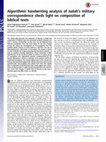
The relationship between the expansion of literacy in Judah and composition of biblical texts has... more The relationship between the expansion of literacy in Judah and composition of biblical texts has attracted scholarly attention for over a century. Information on this issue can be deduced from Hebrew inscriptions from the final phase of the first Temple period. We report our investigation of 16 inscriptions from the Judahite desert fortress of Arad, datedca 600 BCE-the eve of Nebuchadnezzar's destruction of Jerusalem. The inquiry is based on new methods for image processing and document analysis, as well as machine learning algorithms. These techniques enable identification of the minimal number of authors in a given group of inscriptions. Our algorithmic analysis, complemented by the textual information, reveals a minimum of six authors within the examined inscriptions. The results indicate that in this remote fort literacy had spread throughout the military hierarchy, down to the quartermaster and probably even below that rank. This implies that an educational infrastructure that could support the composition of literary texts in Judah already existed before the destruction of the first Temple. A similar level of literacy in this area is attested again only 400 y later,ca 200 BCE.
Document binary images, created by different algorithms, are
commonly evaluated based on a pre-ex... more Document binary images, created by different algorithms, are
commonly evaluated based on a pre-existing ground truth.
Previous research found several pitfalls in this methodology and
suggested various approaches addressing the issue. This article
proposes an alternative binarization quality evaluation solution for binarized glyphs, circumventing the ground truth. Our method relies on intrinsic properties of binarized glyphs. The features used for quality assessment are stroke width consistency, presence of small connected components (stains), edge noise, and the average edge curvature. Linear and tree-based combinations of these features are also considered. The new methodology is tested and shown to be nearly as sound as human experts’ judgments.
During the 2010 excavation season, two inscriptions
with Hieratic signs written in black ink were... more During the 2010 excavation season, two inscriptions
with Hieratic signs written in black ink were
found at Qubur el-Walaydah in the coastal plain of
southern Israel. Although unearthed recently, a
comparison of new color photographs of the
inscriptions with those taken shortly after excavation
shows that their legibility has already deteriorated.
We made images of the inscriptions using
multispectral (MS) techniques described by
(Faigenbaum, Sober et al. 2012). Notwithstanding
the fading of the ink, the MS images significantly
improved the inscriptions’ legibility. In several
cases, faded and unrecognizable letters became
clearly visible. The new MS photographs, which
were essential in deciphering the inscriptions, are
presented here.
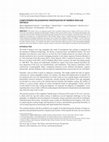
This article surveys an ongoing research of the Legibility Enhancement of Ostraca (LEO) team of T... more This article surveys an ongoing research of the Legibility Enhancement of Ostraca (LEO) team of Tel Aviv University in the field of computerized paleography of Hebrew Iron Age ink-written ostraca. We perform paleographic tasks using tools from the fields of image processing and machine learning. Several new techniques serving this aim, as well as an adaptation of existing ones, are described herein. This includes testing a range of signal-acquisition methodologies, out of which multispectral imaging and Raman spectroscopy have matured into imaging systems. In addition, we deal with semi- or fully automated facsimile construction and refinement, facsimile, and character evaluation, as well as the reconstruction of broken character strokes. We conclude with future research directions, addressing some of the long-standing epigraphic questions, such as the number of scribes in specific corpora or detection of chronological concurrences and inconsistencies.
A recent study shows that multispectral (MS) imaging can improve the legibility of ostraca. Sever... more A recent study shows that multispectral (MS) imaging can improve the legibility of ostraca. Several examples of
Iron Age ostraca unearthed over twenty years ago in Israel (Ḥorvat ʿUza and Ḥorvat Radum) are presented,
showing how new images taken with an MS system improve the reading of inscriptions that have significantly
faded over time. The article provides instructions for constructing a simple and low-cost MS imaging system
that yields comparable results to commercial systems
Semitica 57 (2015): 113-137, 2015
New Readings and Translation of the famous Ophel Ostracon, discovered in 1924 in Jerusalem. Abst... more New Readings and Translation of the famous Ophel Ostracon, discovered in 1924 in Jerusalem. Abstract from the Publication itself: L’ostracon paleo-hébreu de l’Ophel, découvert à Jérusalem il y a près d’un siècle, est en mauvais état. Il est en partie effacé et souffre d’effritement et d’abrasion. Ainsi, des lectures divergentes ont été proposes pour les sections de l’ostracon qui semblent déchiffrables. L’imagerie multispectrale permet d’améliorer la lisibilité de l’inscription. Grâce à cette technologie, nous présentons ici notre analyse épigraphique de l’ostracon de l’Ophel, laquelle résout d’anciens débats et ajoute des lettres non identifiées jusqu’alors.
We examine how multispectral imaging can be used to document and improve reading of ancient inscr... more We examine how multispectral imaging can be used to document and improve reading of ancient inscriptions. The research focuses on ostraca, texts written in ink on ceramic potsherds. Three corpora of Hebrew ostraca dating to the Iron Age II were imaged in visible and near infrared light using a state-of-the-art commercial spectral imager. To assess the quality of images, we used a new quality evaluation measure which takes into account various contrast and brightness transformations. We show that there exists a wavelength range where the readability of ostraca is enhanced. Moreover, we show that it is sufficient to use certain bandpass filters to achieve the most favorable image. Our study paves the way towards a low cost multispectral method of imaging ostraca inscriptions.



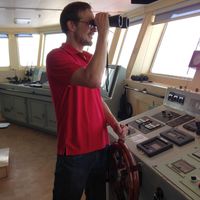

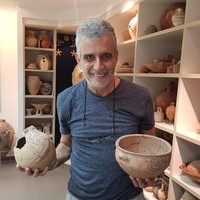




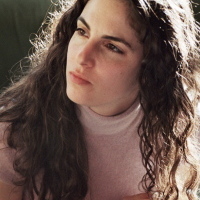
Uploads
Papers by Shira Faigenbaum-Golovin
1. The time of Ancient Israel:
a. Radiocarbon: correlating the chronology of Ancient Israel with neighboring lands, especially the Mediterranean basin, as well as enhancing the dating of the different phases in the Iron Age and deepening understanding of relative chronology based on ceramic typology.
2. The genesis of Ancient Israel:
a. Ancient DNA: collected from humans and animals to track origin and movement of ancient populations.
b. Geo-archaeology: understanding formation processes, use of space, and tracking subsistence economy practices in Ancient Israel by examining sediments in sites that represent Iron Age towns and villages.
c. Palynology: studying cores of sediments from the Dead Sea and Sea of Galilee in order to obtain information on paleoclimate, subsistence practices and settlement oscillations.
3. The life of Ancient Israel:
a. Ceramic petrography: reconstructing production and trade patterns in ceramic vessels – the most common type of macro-artifact in the field.
b. Metallurgy: tracking technological advances, specifically the shift from bronze to iron, during the Iron I–IIA period.
4. The mind of Ancient Israel:
a. Daily mathematics of dimensions: examining pottery vessels to discern, for example, the relationship between units of length and volume for the sake of determining the “mathematical” knowledge of the people of the Iron Age.
b. Epigraphy: using advanced computational methodologies in order to study the development of writing in Israel and Judah.
5. The identity of Ancient Israel:
a. Residue analysis: of pottery vessels in order to determine the usage of vessels, culinary practices and long-distance trade.
b. Archaeo-zoology: studying a large number of assemblages from different sub-phases of the Iron Age in different regions and varied
contexts in order to better understand subsistence strategies in the past
In most of the ten tracks the investigations are being conducted with special reference to both the diachronic and synchronic dimensions. This is done by comparing finds in one site/region along the chronology scale and comparing a given assemblage to finds from the same period in other regions.
commonly evaluated based on a pre-existing ground truth.
Previous research found several pitfalls in this methodology and
suggested various approaches addressing the issue. This article
proposes an alternative binarization quality evaluation solution for binarized glyphs, circumventing the ground truth. Our method relies on intrinsic properties of binarized glyphs. The features used for quality assessment are stroke width consistency, presence of small connected components (stains), edge noise, and the average edge curvature. Linear and tree-based combinations of these features are also considered. The new methodology is tested and shown to be nearly as sound as human experts’ judgments.
with Hieratic signs written in black ink were
found at Qubur el-Walaydah in the coastal plain of
southern Israel. Although unearthed recently, a
comparison of new color photographs of the
inscriptions with those taken shortly after excavation
shows that their legibility has already deteriorated.
We made images of the inscriptions using
multispectral (MS) techniques described by
(Faigenbaum, Sober et al. 2012). Notwithstanding
the fading of the ink, the MS images significantly
improved the inscriptions’ legibility. In several
cases, faded and unrecognizable letters became
clearly visible. The new MS photographs, which
were essential in deciphering the inscriptions, are
presented here.
Iron Age ostraca unearthed over twenty years ago in Israel (Ḥorvat ʿUza and Ḥorvat Radum) are presented,
showing how new images taken with an MS system improve the reading of inscriptions that have significantly
faded over time. The article provides instructions for constructing a simple and low-cost MS imaging system
that yields comparable results to commercial systems
1. The time of Ancient Israel:
a. Radiocarbon: correlating the chronology of Ancient Israel with neighboring lands, especially the Mediterranean basin, as well as enhancing the dating of the different phases in the Iron Age and deepening understanding of relative chronology based on ceramic typology.
2. The genesis of Ancient Israel:
a. Ancient DNA: collected from humans and animals to track origin and movement of ancient populations.
b. Geo-archaeology: understanding formation processes, use of space, and tracking subsistence economy practices in Ancient Israel by examining sediments in sites that represent Iron Age towns and villages.
c. Palynology: studying cores of sediments from the Dead Sea and Sea of Galilee in order to obtain information on paleoclimate, subsistence practices and settlement oscillations.
3. The life of Ancient Israel:
a. Ceramic petrography: reconstructing production and trade patterns in ceramic vessels – the most common type of macro-artifact in the field.
b. Metallurgy: tracking technological advances, specifically the shift from bronze to iron, during the Iron I–IIA period.
4. The mind of Ancient Israel:
a. Daily mathematics of dimensions: examining pottery vessels to discern, for example, the relationship between units of length and volume for the sake of determining the “mathematical” knowledge of the people of the Iron Age.
b. Epigraphy: using advanced computational methodologies in order to study the development of writing in Israel and Judah.
5. The identity of Ancient Israel:
a. Residue analysis: of pottery vessels in order to determine the usage of vessels, culinary practices and long-distance trade.
b. Archaeo-zoology: studying a large number of assemblages from different sub-phases of the Iron Age in different regions and varied
contexts in order to better understand subsistence strategies in the past
In most of the ten tracks the investigations are being conducted with special reference to both the diachronic and synchronic dimensions. This is done by comparing finds in one site/region along the chronology scale and comparing a given assemblage to finds from the same period in other regions.
commonly evaluated based on a pre-existing ground truth.
Previous research found several pitfalls in this methodology and
suggested various approaches addressing the issue. This article
proposes an alternative binarization quality evaluation solution for binarized glyphs, circumventing the ground truth. Our method relies on intrinsic properties of binarized glyphs. The features used for quality assessment are stroke width consistency, presence of small connected components (stains), edge noise, and the average edge curvature. Linear and tree-based combinations of these features are also considered. The new methodology is tested and shown to be nearly as sound as human experts’ judgments.
with Hieratic signs written in black ink were
found at Qubur el-Walaydah in the coastal plain of
southern Israel. Although unearthed recently, a
comparison of new color photographs of the
inscriptions with those taken shortly after excavation
shows that their legibility has already deteriorated.
We made images of the inscriptions using
multispectral (MS) techniques described by
(Faigenbaum, Sober et al. 2012). Notwithstanding
the fading of the ink, the MS images significantly
improved the inscriptions’ legibility. In several
cases, faded and unrecognizable letters became
clearly visible. The new MS photographs, which
were essential in deciphering the inscriptions, are
presented here.
Iron Age ostraca unearthed over twenty years ago in Israel (Ḥorvat ʿUza and Ḥorvat Radum) are presented,
showing how new images taken with an MS system improve the reading of inscriptions that have significantly
faded over time. The article provides instructions for constructing a simple and low-cost MS imaging system
that yields comparable results to commercial systems